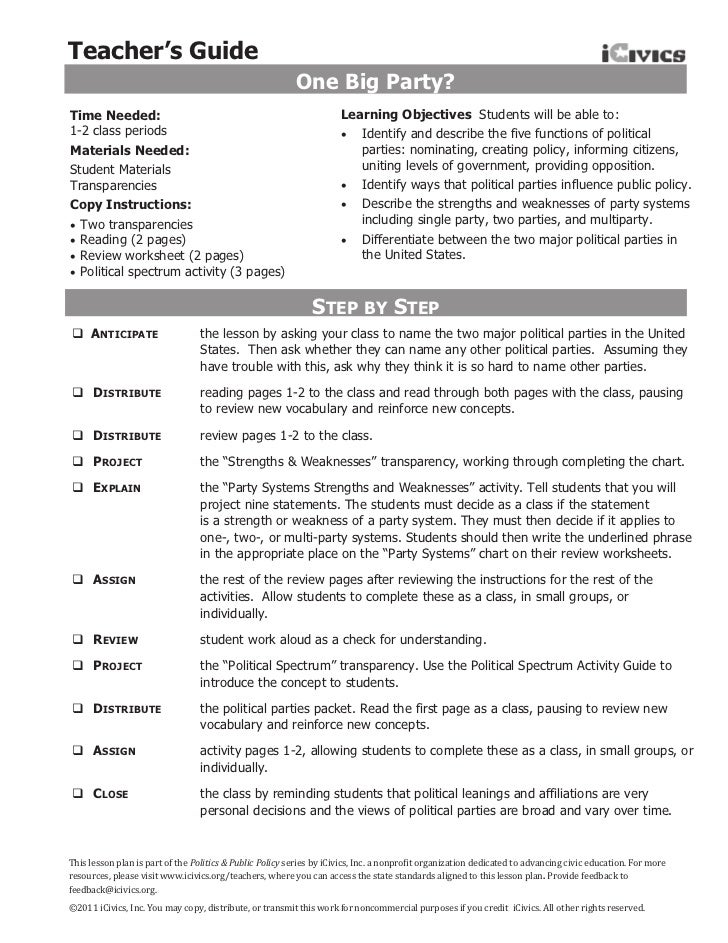Congressional Lawmaking Guide Answer
Chapter 12 Congressional Lawmaking Working in Committee Committee chairs are chosen by the majority party The Path of a Bill Through a Committee Debating and Voting on the House and Senate Floor Power of Recognition - Only the speaker and the majority leader may recognize members so that they may rise to address the chamber. Final Steps in the Legislative Process Conferees - members of a conference committee appointed by the Speaker of the House and the presiding officer of the Senate, tasked working out a compromise on a bill that a majority of lawmakers in both chambers can accept and the President will sign into law. Seniority Rule - the influence of one's seniority and experience upon appointment as chair of a committee. One a bill is sent to a committee, the chair can choose to hold hearings on the bill, or simply ignore it. Jlg manlift manual and methodology.

No matter where a bill originates, a member of Congress must introduce it. A bill can originate from various places, such as individual citizens and interest groups, or departments and agencies of the executive branch. Phase 1: Hearings A legislative hearing to listen to testimonies and gather information from individuals who are interested in or have expertise to share about the proposed legislation.
Phase 3: Report Once subcommittee members deal with the last amendment to the bill, they vote on a motion to return the bill to the full committee. Phase 2: Markup A markup session is made in which members mark up, or amend, the bill. Closed Rule - preferred by a bill's supporters, it severely limits floor debate to allow it to get through the House quickly Open Rule - preferred by a bill's opponents, it allows floor debate and the introduction of amendments that could cripple or kill the bill Can be short or drag on for days At least one-third of members must be present at a markup session to make up a quorum. The standing committee can then accept the bill as is or amend it further - even holding more hearings and its own markup session. Legislative process has three main parts: 1.
General debate on the bill 2. Debate and voting on amendments to the bill 3. Voting on final passage of the bill Filibuster - a prolonged debate or other delaying tactic aimed at blocking the passage of a bill favored by a majority of lawmakers. Cloture - A means of closing debate, requiring three-fifths of the Senate. Hold - delays debate and signals the lawmaker's intention of launching a filibuster if the bill is sent to the Senate floor. Pressures and Influences on Legislators Interest Groups - lobbyists of interest groups crowd committee rooms and the halls of congress, confronting legislators who are undecided on how to vote on a particular bill.
Party Leaders - leaders of each political party expect their members to support the party's public policy goal. Colleagues - logrolling, or mutual support and cooperation, occurs when members of congress trade votes, so rather than two opposing bills not passing, both may pass as opponents vote on each other's bills After the conferees reach an agreement, or conference report, it goes back to the House and Senate for an up-or-down vote, with no further amendments. Once a bill is delivered to the White House, the president has 10 days to do one of the following: Sign the bill into law Veto the bill Take no action, in which case the bill will automatically go into effect after the 10 days Congressional Override - If two-thirds of lawmakers from both chambers approve the override of a presidential veto, the bill will become law without the President.

1.Congressional Pages: Young receptionist that takes calls and does research for members. Seniority Rule: Members of congress have a choice in their committees their rank of length of serving 3.
Chemical Energy And Atp Study Guide Answer Key
Filibuster: An action that prolongs the passing of a bill or any legislative action 4.Cloture: When a filibuster can be ended and a decision can be made 5. Hold: Procedure when one or more senators are able to keep a motion from reaching a vote 6. Riders: An added provision in which helps pass a bill for the reason that it won’t pass 7.
Christmas Tree Bill: a term referencing a bill that attracts many to it and it also uses riders to get them passed but the majority of them favor certain groups 8.Logrolling: Trading favor within parties to get passage of important beneficial actions Section 1 Section 2 Section 3. Congress person x will be the most selected candidate because their experience is long and balanced and they have an understanding of the political stands and being a republican aids them in no favor.
I would ask for an open bill so the process is faster for the benefit of the people Section 4 Section 5.